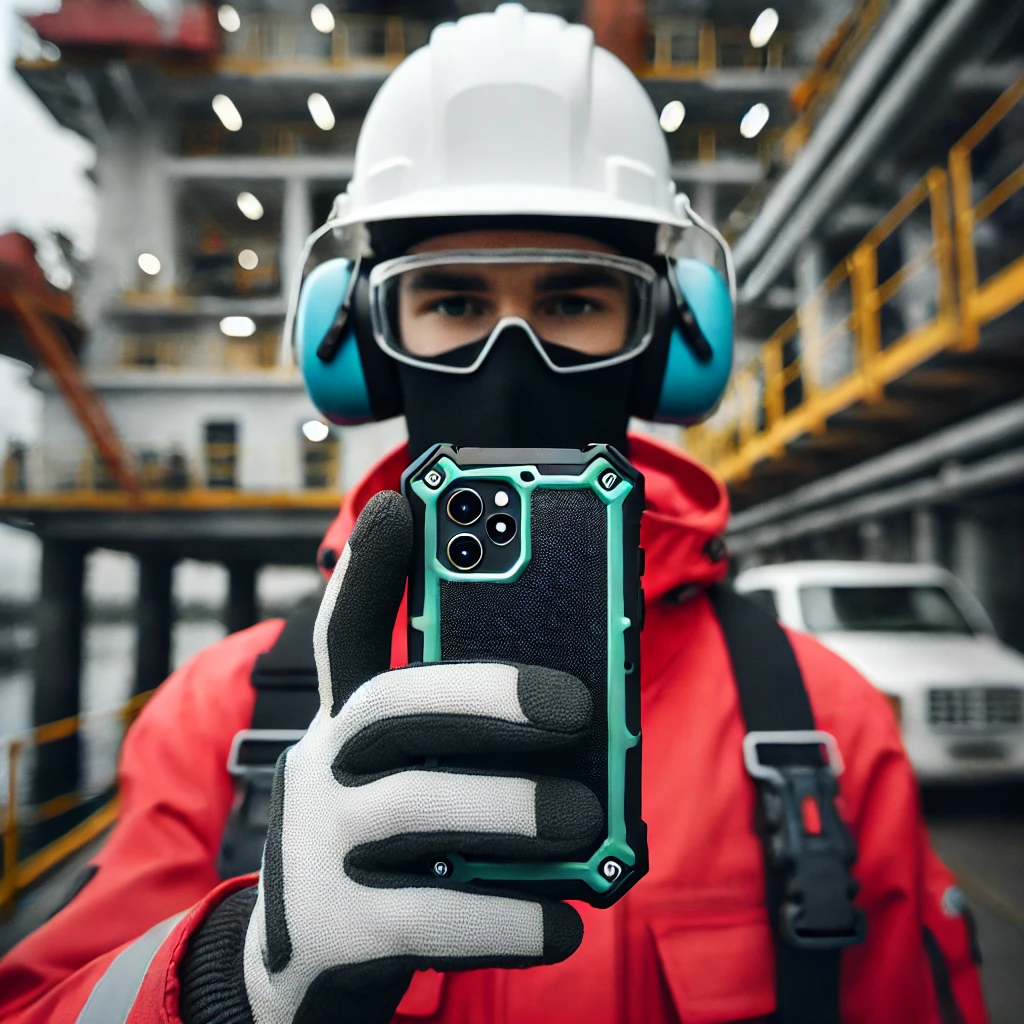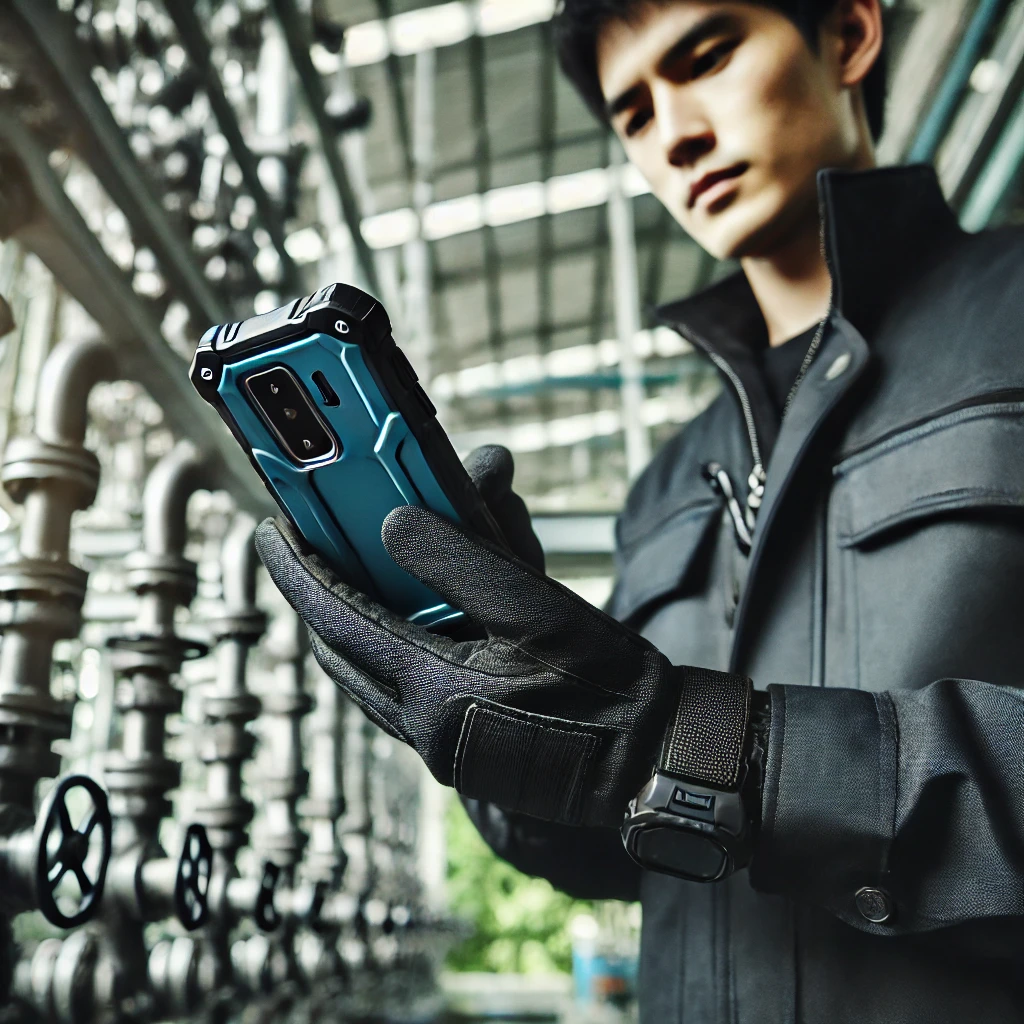
In the ever-evolving landscape of industrial operations, ensuring safety while maintaining efficiency is a top priority. This is particularly true in environments where the presence of explosive gases, vapors, or dust poses a constant threat. Intrinsically safe mobile devices have become indispensable tools in such settings, offering a blend of safety and functionality that standard devices cannot match. These specialized devices are engineered to prevent ignition, thereby safeguarding both personnel and equipment. However, choosing the right intrinsically safe mobile device is not a straightforward task. It requires a deep understanding of the specific hazards present, the relevant safety standards, and the operational needs of your industry. This comprehensive guide aims to demystify the process, providing insights into the key factors to consider when selecting these critical devices.
Understanding the Essentials: How to Choose Intrinsically Safe Mobile Devices
In today’s fast-paced industrial environments, the need for reliable and safe communication tools is paramount. Intrinsically safe mobile devices have emerged as a critical solution for industries where explosive atmospheres are a constant risk. These devices are designed to operate safely in hazardous areas by ensuring that they do not produce sparks or heat that could ignite flammable substances. Choosing the right intrinsically safe mobile device requires a comprehensive understanding of both the technical specifications and the specific needs of your operational environment.
The first step in selecting an intrinsically safe mobile device is to understand the classification of hazardous areas in which the device will be used. Hazardous areas are typically classified into zones based on the frequency and duration of the presence of explosive gases or dust. For instance, Zone 0 is an area where explosive gases are present continuously or for long periods, while Zone 1 and Zone 2 are areas where such gases are present intermittently or under abnormal conditions, respectively. Understanding these classifications is crucial because intrinsically safe devices are certified for use in specific zones, and using a device in the wrong zone can compromise safety.
Another critical factor to consider is the certification standards that the device adheres to. Different regions have different certification bodies and standards, such as ATEX in Europe, IECEx internationally, and NEC in North America. These standards ensure that the devices have been rigorously tested and are safe for use in hazardous environments. When choosing a device, it is essential to verify that it meets the relevant certification standards for your region and industry. This not only ensures compliance with legal and safety requirements but also provides peace of mind that the device will perform reliably under challenging conditions.
The functionality and features of the device are also important considerations. Intrinsically safe mobile devices should offer robust communication capabilities, including voice, data, and potentially video, depending on the needs of your operation. Additionally, features such as GPS, Bluetooth, and Wi-Fi connectivity can enhance the device’s utility in the field. However, it is crucial to balance these features with the device’s safety requirements, as additional functionalities can sometimes increase the risk of ignition if not properly managed.
Durability and ease of use are also key factors in the selection process. Devices used in hazardous environments must be able to withstand harsh conditions, including extreme temperatures, dust, and moisture. Look for devices with high ingress protection (IP) ratings, which indicate their resistance to dust and water. Furthermore, the device should be user-friendly, with an intuitive interface that allows workers to operate it efficiently, even while wearing protective gear.
Battery life is another important consideration, as devices used in remote or hazardous locations may not have easy access to charging facilities. Long battery life ensures that the device can operate throughout a work shift without needing frequent recharges, which can be both inconvenient and potentially unsafe in certain environments.
Finally, consider the support and service options available from the manufacturer. Reliable customer support and service are essential for maintaining the device’s performance and addressing any issues that may arise. Look for manufacturers with a strong reputation for quality and customer service, as this can significantly impact the overall user experience and the device’s longevity.
In summary, choosing the right intrinsically safe mobile device involves a careful evaluation of the hazardous area classifications, certification standards, functionality, durability, battery life, and manufacturer support. By taking these factors into account, you can ensure that your chosen device will not only meet the safety requirements of your industry but also enhance the efficiency and effectiveness of your operations in hazardous environments.
Who Should Consider Intrinsically Safe Mobile Devices?
In today’s fast-paced world, mobile devices have become indispensable tools for communication, productivity, and entertainment. However, in certain industries, the use of standard mobile devices can pose significant safety risks. This is where intrinsically safe mobile devices come into play, offering a solution that ensures safety without compromising on functionality. But who exactly should consider investing in these specialized devices?
Industries that operate in hazardous environments are the primary candidates for intrinsically safe mobile devices. These environments are typically characterized by the presence of flammable gases, vapors, dust, or fibers that could ignite if exposed to a spark or high temperature. Workers in the oil and gas industry, for instance, often find themselves in such conditions. Whether they are on offshore rigs or in refineries, the risk of explosion is a constant concern. Intrinsically safe mobile devices are designed to prevent ignition, making them an essential tool for these professionals. By using these devices, workers can communicate and access critical information without the fear of triggering a catastrophic event.
Similarly, the chemical manufacturing industry is another sector where intrinsically safe mobile devices are crucial. Chemical plants often handle volatile substances that can easily ignite. Employees in these settings need reliable communication tools that do not compromise safety. Intrinsically safe devices allow them to perform their duties efficiently while adhering to strict safety regulations. These devices are engineered to limit electrical and thermal energy, ensuring that they do not become a source of ignition in potentially explosive atmospheres.
The mining industry also benefits significantly from intrinsically safe mobile devices. Mines are fraught with hazards, including the presence of combustible dust and gases. In such environments, the use of standard electronic devices can be perilous. Intrinsically safe mobile devices provide miners with the ability to communicate and coordinate activities underground without the risk of igniting explosive materials. This not only enhances safety but also improves operational efficiency by enabling seamless communication in challenging conditions.
Beyond these industries, intrinsically safe mobile devices are also valuable in sectors such as pharmaceuticals, food processing, and even certain areas of manufacturing where explosive atmospheres may be present. In these environments, maintaining safety standards is paramount, and intrinsically safe devices play a critical role in achieving this goal. They allow workers to carry out their tasks without the constant worry of causing an explosion, thereby fostering a safer and more productive work environment.
Moreover, regulatory compliance is a significant factor driving the adoption of intrinsically safe mobile devices. Many industries are subject to stringent safety regulations that mandate the use of certified equipment in hazardous areas. Failure to comply with these regulations can result in severe penalties, including fines and operational shutdowns. By investing in intrinsically safe devices, companies can ensure compliance with industry standards and avoid the financial and reputational repercussions of non-compliance.
In essence, any industry or organization that operates in environments where explosive atmospheres are a concern should consider intrinsically safe mobile devices. These devices not only enhance safety but also provide peace of mind, allowing workers to focus on their tasks without the looming threat of an explosion. As technology continues to advance, the availability and functionality of intrinsically safe devices are likely to expand, offering even more options for industries committed to maintaining the highest safety standards.

The Main Benefits of Choosing Intrinsically Safe Mobile Devices
Selecting intrinsically safe mobile devices is a critical decision for industries operating in hazardous environments. These devices are engineered to prevent the ignition of flammable substances, ensuring safety in environments where explosive gases, vapors, or dust are present. The benefits of choosing such devices extend beyond mere compliance with safety regulations; they encompass enhanced operational efficiency, improved worker safety, and long-term cost savings.
One of the primary benefits of intrinsically safe mobile devices is the assurance of safety in hazardous environments. Industries such as oil and gas, chemical manufacturing, and mining often operate in areas where the risk of explosion is a constant concern. Intrinsically safe devices are designed to operate safely in these environments by limiting the energy available for ignition. This means that even if a device malfunctions, it will not produce enough energy to ignite a flammable atmosphere. This safety feature is crucial for protecting both personnel and equipment, reducing the risk of catastrophic incidents that could lead to injury, loss of life, or significant financial loss.
Another significant advantage is the enhancement of operational efficiency. Intrinsically safe mobile devices allow workers to perform their tasks without the need for cumbersome protective measures that might otherwise be necessary. For instance, in environments where traditional electronic devices are prohibited due to explosion risks, intrinsically safe devices enable seamless communication and data access. This capability is particularly important in industries where real-time data is critical for decision-making. Workers can use these devices to access and input data, communicate with team members, and even perform remote diagnostics, all while remaining compliant with safety standards. This level of functionality not only boosts productivity but also ensures that operations run smoothly and efficiently.
Moreover, intrinsically safe mobile devices contribute to long-term cost savings. While the initial investment in these devices may be higher compared to standard mobile devices, the cost benefits become apparent over time. By preventing accidents and minimizing downtime, these devices help avoid the financial repercussions associated with workplace incidents. Additionally, they reduce the need for frequent replacements or repairs, as they are built to withstand harsh conditions. This durability translates into lower maintenance costs and a longer lifespan, providing a better return on investment.
Furthermore, the use of intrinsically safe mobile devices can enhance a company’s reputation and compliance with industry standards. In today’s business environment, demonstrating a commitment to safety and regulatory compliance is essential for maintaining a competitive edge. Companies that prioritize safety by investing in intrinsically safe technology are often viewed more favorably by clients, partners, and regulatory bodies. This positive perception can lead to increased business opportunities and a stronger market position.
In summary, the decision to choose intrinsically safe mobile devices is not just about meeting safety requirements; it is a strategic move that offers numerous benefits. From ensuring the safety of workers and equipment to enhancing operational efficiency and achieving cost savings, these devices play a vital role in the successful operation of industries in hazardous environments. By investing in intrinsically safe technology, companies can protect their most valuable assets—people and processes—while positioning themselves for long-term success.
Understanding the Basics of Intrinsically Safe Mobile Devices
Embarking on the journey to select the right intrinsically safe mobile device can initially seem daunting, especially given the technical nuances and safety standards involved. However, understanding the fundamental aspects of these devices can significantly simplify the process. Intrinsically safe mobile devices are specifically designed to operate safely in hazardous environments where flammable gases, vapors, or dust may be present. These devices are engineered to prevent the release of sufficient energy to ignite these substances, thereby ensuring the safety of both the user and the environment. The first step in choosing the right device is to thoroughly assess the specific needs and conditions of your work environment. This involves identifying the types of hazardous materials present and understanding the classification of the hazardous area. Hazardous locations are categorized into different zones or divisions based on the frequency and duration of the presence of explosive atmospheres. Knowing the classification of your work area is crucial as it determines the level of protection required from your mobile device.
Once you have a clear understanding of the environmental conditions, the next step is to familiarize yourself with the various certifications and standards that govern intrinsically safe devices. Different regions have different standards, such as ATEX in Europe, IECEx internationally, and NEC in North America. These certifications ensure that the devices have been rigorously tested and meet the necessary safety requirements for use in hazardous areas. It is essential to choose a device that complies with the relevant standards for your specific location and industry. Additionally, consider the specific features and functionalities that are important for your operations. Intrinsically safe mobile devices come with a range of capabilities, from basic communication functions to advanced features like GPS, cameras, and data management systems. Evaluate the tasks that the device will be used for and select a model that offers the necessary features without compromising on safety.
Another critical factor to consider is the durability and reliability of the device. Hazardous environments can be harsh, with extreme temperatures, moisture, and dust. Therefore, it is important to choose a device that is robust and can withstand these challenging conditions. Look for devices with high ingress protection (IP) ratings, which indicate their resistance to dust and water. Battery life is another important consideration, as the device needs to function reliably throughout the workday without frequent recharging. Finally, consider the support and service options available from the manufacturer. Intrinsically safe devices are specialized equipment, and having access to reliable technical support and service can be invaluable. Check if the manufacturer offers comprehensive warranties, repair services, and customer support to ensure that any issues can be promptly addressed. By taking the time to understand these key aspects, you can make an informed decision and choose an intrinsically safe mobile device that meets your safety requirements and operational needs.
Making the Right Choice for Safety and Efficiency
The decision to invest in intrinsically safe mobile devices is a strategic one, with far-reaching implications for safety, compliance, and operational efficiency. As industries continue to navigate the complexities of hazardous environments, the importance of selecting the right device cannot be overstated. By thoroughly understanding the classifications of hazardous areas, adhering to relevant certification standards, and evaluating the specific features and durability of the devices, organizations can make informed choices that enhance both safety and productivity. Moreover, considering factors such as battery life, manufacturer support, and total cost of ownership ensures that the investment is not only compliant but also cost-effective in the long run.
As technology advances, the capabilities of intrinsically safe devices will continue to expand, offering even greater opportunities for industries committed to maintaining the highest safety standards. Ultimately, the right intrinsically safe mobile device is more than just a tool; it is a vital component of a comprehensive safety strategy that protects both people and processes in the most challenging environments.
Timing Your Decision: When to Choose Intrinsically Safe Mobile Devices
Deciding when to invest in intrinsically safe mobile devices is a critical consideration for businesses operating in hazardous environments. The timing of this decision can significantly impact both safety and operational efficiency. Understanding the optimal moment to make this choice involves evaluating several key factors, including regulatory requirements, technological advancements, and the specific needs of your industry.
One of the primary considerations is the regulatory landscape. Industries such as oil and gas, chemical manufacturing, and mining are subject to stringent safety regulations that often mandate the use of intrinsically safe equipment. If your business is facing new regulatory requirements or an upcoming audit, it may be the right time to assess your current mobile device strategy. Compliance is not just about avoiding fines; it’s about ensuring the safety of your workforce and maintaining your company’s reputation. Therefore, staying ahead of regulatory changes by proactively upgrading to intrinsically safe devices can be a strategic move.
Technological advancements also play a crucial role in determining the timing of your decision. The field of intrinsically safe technology is continually evolving, with manufacturers regularly releasing new models that offer enhanced features, better performance, and improved safety standards. If your current devices are outdated or if there have been significant technological advancements since your last purchase, it might be time to consider an upgrade. Newer devices often come with improved battery life, better connectivity options, and enhanced durability, all of which can contribute to increased productivity and safety in hazardous environments.
Another important factor is the specific operational needs of your industry. If your business is expanding into new markets or taking on projects that involve higher risk levels, the need for intrinsically safe mobile devices becomes more pressing. For instance, if you are planning to enter a new geographical area with stricter safety regulations or more challenging environmental conditions, equipping your team with the right devices can be crucial. Similarly, if your operations are becoming more complex or if you are integrating new technologies such as IoT or advanced data analytics, ensuring that your mobile devices are compatible and safe to use in hazardous conditions is essential.
Moreover, consider the feedback from your workforce. Employees who work in hazardous environments are often the first to notice the limitations of current equipment. If there are frequent reports of device failures, connectivity issues, or safety concerns, it may be time to reassess your mobile device strategy. Engaging with your team to understand their challenges and needs can provide valuable insights into the timing of your decision.
Finally, budgetary considerations cannot be overlooked. While intrinsically safe devices can represent a significant investment, the cost of not upgrading can be far greater in terms of potential accidents, regulatory fines, and lost productivity. Evaluating the total cost of ownership, including potential savings from reduced downtime and increased efficiency, can help determine the best time to make the switch.
In summary, the decision to choose intrinsically safe mobile devices should be carefully timed to align with regulatory requirements, technological advancements, operational needs, workforce feedback, and budgetary constraints. By considering these factors, businesses can ensure they are making a strategic investment that enhances safety and efficiency in hazardous environments.
Choosing the Right Intrinsically Safe Mobile Device: Key Considerations
When selecting an intrinsically safe mobile device, the decision-making process involves a careful evaluation of several critical factors to ensure both safety and functionality in hazardous environments. The primary consideration is the specific classification of the hazardous area where the device will be used. Different environments, such as those found in oil refineries, chemical plants, or mining operations, have varying levels of risk and require devices certified for specific zones. Understanding the classification of your work environment is crucial, as it dictates the level of protection needed. Devices are typically rated for use in Zone 0, Zone 1, or Zone 2, with Zone 0 being the most hazardous. Ensuring that the device is certified for the appropriate zone is the first step in safeguarding both personnel and equipment.
Another important factor is the device’s certification standards. Intrinsically safe devices must meet rigorous international standards, such as ATEX, IECEx, or North American standards like UL and CSA. These certifications guarantee that the device has been tested and approved for use in explosive atmospheres. It is essential to verify that the device carries the necessary certification marks for your region and industry. This not only ensures compliance with legal and safety requirements but also provides peace of mind that the device will perform reliably under challenging conditions.
Durability and ruggedness are also paramount when choosing an intrinsically safe mobile device. These devices are often subjected to harsh environments, including extreme temperatures, dust, moisture, and mechanical shocks. Therefore, selecting a device with a robust build quality and an appropriate Ingress Protection (IP) rating is vital. An IP rating indicates the level of protection against solids and liquids, with higher numbers signifying better protection. For instance, a device with an IP68 rating is dust-tight and can withstand immersion in water, making it suitable for use in demanding environments.
Battery life and power management are additional considerations that should not be overlooked. In hazardous areas, frequent charging or battery replacement can be impractical and potentially dangerous. Therefore, choosing a device with a long-lasting battery and efficient power management features is crucial. Some devices offer hot-swappable batteries, allowing users to replace the battery without shutting down the device, which can be a significant advantage in maintaining productivity and safety.
Furthermore, the functionality and features of the device should align with the specific needs of the user and the tasks at hand. Consider whether the device supports the necessary applications and connectivity options, such as Wi-Fi, Bluetooth, or LTE, to facilitate seamless communication and data transfer. Additionally, features like GPS, barcode scanning, and push-to-talk capabilities can enhance operational efficiency and safety in the field.
Finally, consider the total cost of ownership, which includes not only the initial purchase price but also maintenance, support, and potential downtime costs. Investing in a high-quality, intrinsically safe mobile device may have a higher upfront cost, but it can lead to long-term savings by reducing the risk of accidents, equipment failure, and regulatory fines. Evaluating the manufacturer’s reputation, warranty, and customer support services can also provide valuable insights into the device’s reliability and the level of support you can expect throughout its lifecycle.
In summary, choosing the right intrinsically safe mobile device requires a comprehensive assessment of the hazardous environment, certification standards, durability, battery life, functionality, and total cost of ownership. By carefully considering these factors, you can select a device that not only meets safety requirements but also enhances productivity and efficiency in challenging work environments.
Frequently Asked Questions About Intrinsically Safe Mobile Devices
When it comes to selecting intrinsically safe mobile devices, many questions arise due to the complexity and specificity of the requirements involved. These devices are essential in hazardous environments where safety is paramount, such as in oil refineries, chemical plants, and other industrial settings. Understanding the nuances of these devices can be challenging, so addressing frequently asked questions can provide clarity and guidance.
What Does ‘Intrinsically Safe’ Mean?
Intrinsically safe devices are designed to operate safely in hazardous areas by limiting the energy available for ignition. This means that even if a fault occurs, the device will not produce enough energy to ignite a flammable atmosphere. This is crucial in environments where explosive gases, vapors, or dust are present. The concept of intrinsic safety is a preventive measure, ensuring that devices do not become a source of ignition.
Why Are Intrinsically Safe Mobile Devices Necessary?
In industries where explosive atmospheres are a risk, using standard mobile devices can be dangerous. Intrinsically safe mobile devices are necessary to prevent accidents and ensure the safety of workers. These devices are engineered to meet stringent safety standards and are tested to ensure they do not ignite hazardous substances. This makes them indispensable tools for communication and data management in high-risk areas.
What Standards and Certifications Should Be Considered?
When choosing intrinsically safe mobile devices, it is essential to consider the relevant standards and certifications. The most common certifications include ATEX (European Union), IECEx (International), and NEC/CEC (North America). Each certification has specific requirements and classifications based on the type of hazardous environment. It is crucial to select a device that meets the appropriate certification for your specific industry and location.
How Do I Determine the Right Device for My Needs?
Selecting the right intrinsically safe mobile device involves assessing the specific needs of your operation. Consider the environment in which the device will be used, the type of hazards present, and the tasks that need to be performed. Evaluate the device’s features, such as battery life, durability, connectivity options, and compatibility with existing systems. Consulting with safety experts and conducting a thorough risk assessment can also aid in making an informed decision.
Are There Any Limitations to Using Intrinsically Safe Devices?
While intrinsically safe devices are designed for safety, they may have limitations compared to standard devices. These can include reduced processing power, limited features, or higher costs due to the specialized design and certification process. However, the trade-off is often necessary to ensure safety in hazardous environments. It is important to weigh these limitations against the safety benefits and operational requirements.
What Are the Maintenance and Inspection Requirements?
Regular maintenance and inspection are crucial for intrinsically safe devices to ensure they remain compliant and functional. This includes checking for physical damage, ensuring seals and enclosures are intact, and verifying that the device continues to meet safety standards. Manufacturers typically provide guidelines for maintenance, and it is important to follow these to maintain the device’s safety integrity.
Choosing the right intrinsically safe mobile device is a critical decision that impacts both safety and operational efficiency. By understanding the key considerations and addressing common questions, organizations can make informed choices that protect their workforce and assets in hazardous environments.



























